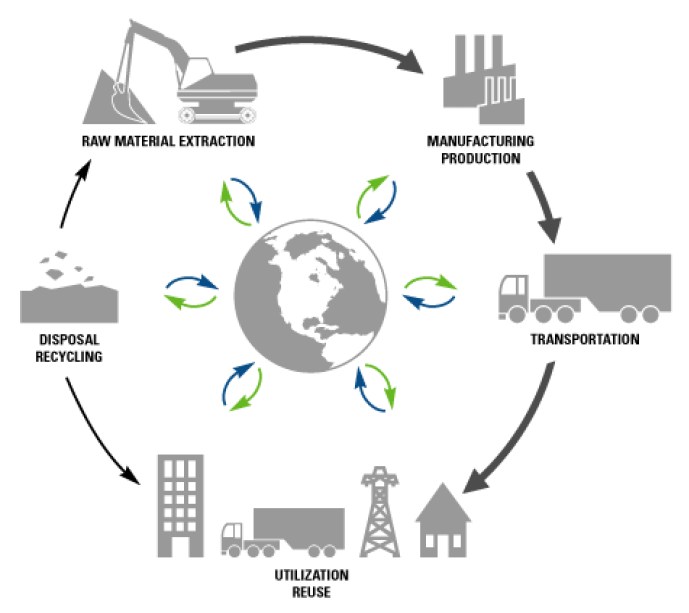This unit will give us a chance to apply the engineering design process and the various modeling skills we’ve developed to create a solution to a real-world problem. In addition, we’ll look at the lifecycle of the products we design and the ethical implications of engineering work. In the end, we’ll organize our work by following the engineering design process:
- Define the Problem & Create a Design Brief
- Research & Brainstorm
- Pick a Solution
- Build or model a Prototype
- Test & Evaluate
- Communicate Results
In doing this, not only will you and your team be able to develop the solution to a real-world problem.
- STEP 1: Take some time to review the principles of design ethics and the product life cycle, taking some careful notes in your engineering notebook.
- STEP 2: Work with your group to develop a design brief, research, and brainstorm possible solutions. Your chosen solution will then be fully described and prepared for development.
- STEP 3: Work with your group to pick a solution, and write-up how the solution will work. Continue to cooperate to sketch your solutions and create a model in Autodesk that might include multiple parts and an assembly
When you’re done, you’ll have gotten to practice the engineering design process again and made a cool solution to a new problem.
As engineers develop solutions to problems, they need to be careful about not creating new problems along the way! To do this, it’s important to consider the lifecycle of a product and the ethics that play into the engineering process. First, watch the “Product Lifecycle” presentation, taking some notes in your engineering notebook. Then, with those in mind, watch the “How It’s Made” video and respond briefly to the questions at the end. Finally, review the Design Ethics presentation, taking further notes about how this impacts the engineering design process.
GRADING & PROCESS
![]() Watch the Product Lifecycle presentation and take careful notes on the big ideas.
Watch the Product Lifecycle presentation and take careful notes on the big ideas.
![]() Watch the How It’s Made video and answer the response questions at the end of the video in your engineering notebook.
Watch the How It’s Made video and answer the response questions at the end of the video in your engineering notebook.
![]() Review the Design Ethics presentation, and finish your page of notes by with ideas from this presentation
Review the Design Ethics presentation, and finish your page of notes by with ideas from this presentation
![]() Have Mr. Benshoof approve your notes
Have Mr. Benshoof approve your notes

Product Lifecycle Image
How It’s Made – Nuts & Bolts
Ethics in Engineering
How It’s Made – Battery Recycling
Ethics in Engineering
How It’s Made – Magnets
Design Brief & Brainstorm
This next part of the unit will have you work with your team to define a local problem and then research, brainstorm, and select a solution. We’re very used to the engineering design process, and this is a chance to use it to solve one more problem! Your team needs to select a real-world community problem that can be solved with the tools we have readily available here in the lab. After creating a complete design brief, your team will research and brainstorm lots of ideas before using a decision matrix to select your final solution!
GRADING & PROCESS
![]() Work with your team to select a design challenge and develop a design brief – have everyone record the design brief in their own engineering notebook. The five diferent engineering design challenges are available below.
Work with your team to select a design challenge and develop a design brief – have everyone record the design brief in their own engineering notebook. The five diferent engineering design challenges are available below.
![]() Research and brainstorm at least 20 possible solutions to your problem and record them.
Research and brainstorm at least 20 possible solutions to your problem and record them.
![]() Use a decision matrix to decide between the best ideas and agree with your team on your final solution.
Use a decision matrix to decide between the best ideas and agree with your team on your final solution.
![]() Describe your solution with a mix of concept sketches and written descriptions in your notebook.
Describe your solution with a mix of concept sketches and written descriptions in your notebook.
![]() Have Mr. Benshoof check-off your design brief and solution!
Have Mr. Benshoof check-off your design brief and solution!
Option 1
Option 2
Option 3
Option 4
Option 5
The final step to any engineering project is to share your work with others. This can be done using written documentation, drawings and diagrams, 3D models, written responses and essays, pictures, or video. As you and your team work through your design, you’ll need to put together a small portfolio of your group’s idea. This portfolio can include as many elements as your team wants, but must be complete and submitted by the competition deadline!
GRADING & PROCESS
![]() Agree with your team on your final solution
Agree with your team on your final solution
![]() Discuss the product lifecycle of your solution and make notes in your notebook outlining the product lifecycle and how it impacts society and the environment
Discuss the product lifecycle of your solution and make notes in your notebook outlining the product lifecycle and how it impacts society and the environment
![]() Make a 3D model of your solution in Autodesk – if appropriate, make an assembly that shows how pieces interact
Make a 3D model of your solution in Autodesk – if appropriate, make an assembly that shows how pieces interact
![]() Have Mr. Benshoof confirm your team’s submission!
Have Mr. Benshoof confirm your team’s submission!
Part 1 Resources
Part 2 Resources
Part 3 Resources